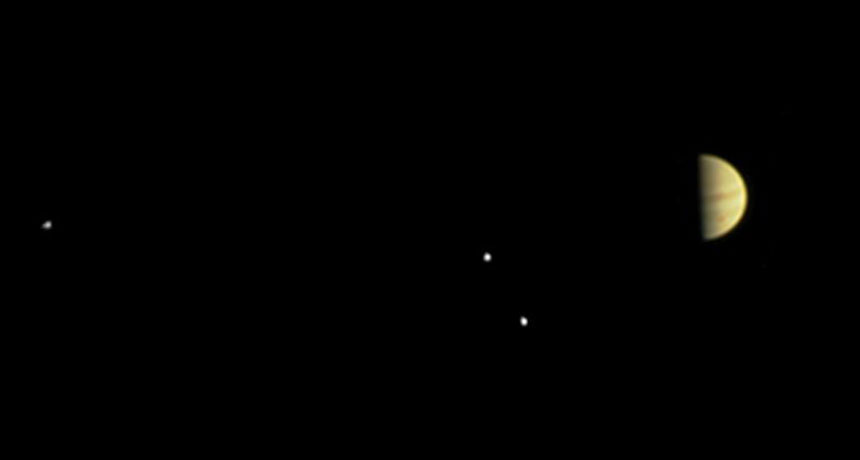Juno spacecraft is on its final approach to Jupiter

All systems are go for the Juno spacecraft’s July 4 encounter with Jupiter.
“We couldn’t be more excited about being this close to Jupiter’s doorstep,” said Diane Brown, Juno program executive at NASA Headquarters in Washington, D.C., during a June 30 news briefing.
The scientific instruments have been shut off and the final command sequence for going into orbit around Jupiter has been uploaded to the spacecraft’s computers. On July 4, the probe will fire its main engine for 35 minutes, using it as a brake to slow down and be captured by Jupiter’s gravity. Once in orbit, Juno will spend 20 months figuring out what’s hiding beneath the thick clouds that encase the planet.
Juno has been busy during its final approach. On June 28, it got one more look at Jupiter and three of its moons. And last week Juno monitored changes in interplanetary plasma (see below) as it crossed a magnetic boundary that shields Jupiter from the stream of charged particles blowing from the sun.
Now all scientists can do is wait. “I have mixed emotions,” said mission lead Scott Bolton, a planetary scientist at the Southwest Research Institute in San Antonio. “I’m excited, but I also have tension and nervousness.” Juno has to perform a critical engine burn all on its own while passing through treacherous belts of radiation that encircle the planet. A series of radio tones from the spacecraft will let mission scientists know whether or not it worked.
“Come see us on July 4,” Bolton said.